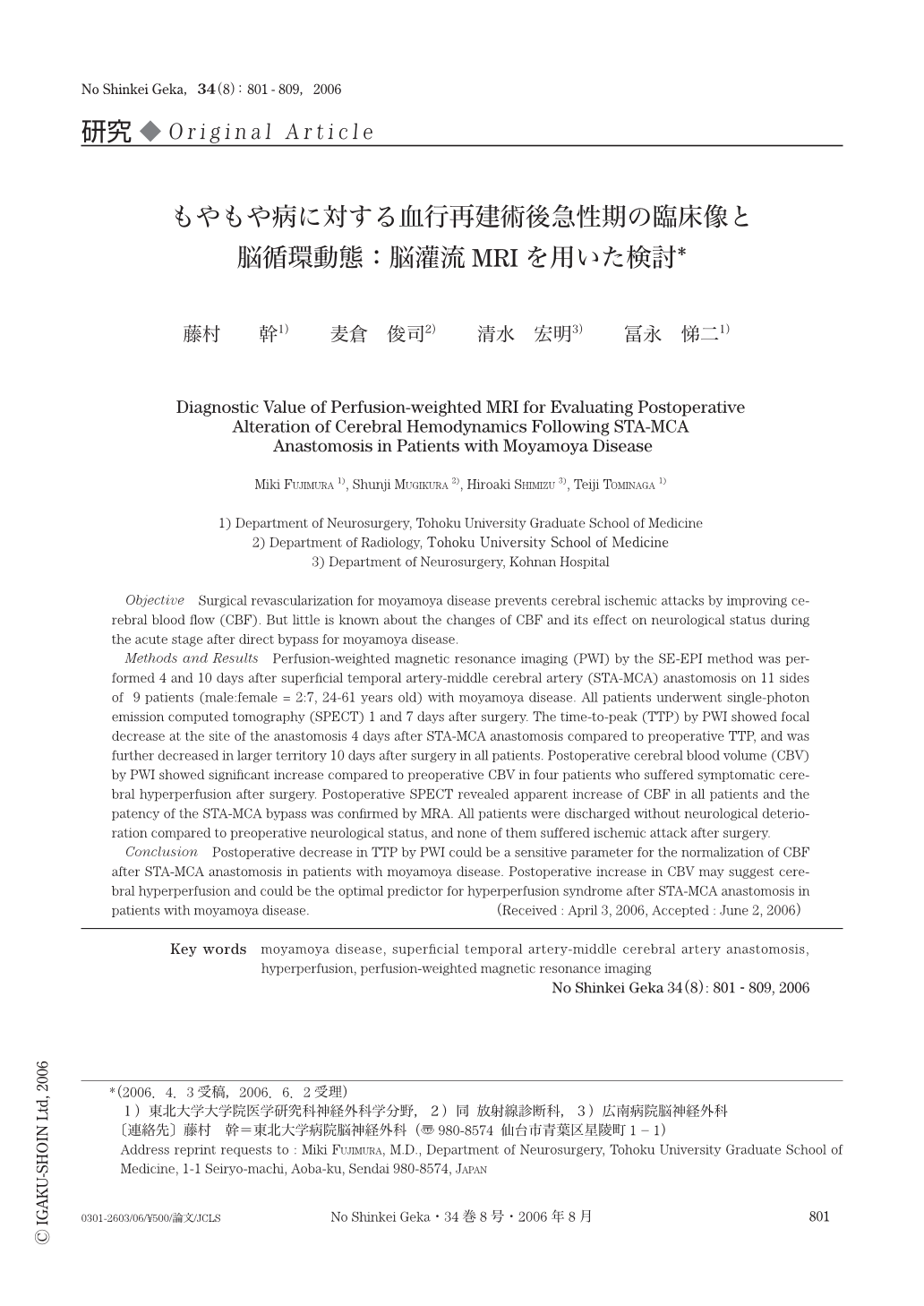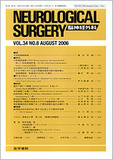Japanese
English
- 有料閲覧
- Abstract 文献概要
- 1ページ目 Look Inside
- 参考文献 Reference
Ⅰ.は じ め に
もやもや病は両側内頸動脈終末部,前および中大脳動脈近位部が進行性に狭窄・閉塞し,その付近に異常血管網の発達を認める原因不明の疾患である 13).浅側頭動脈・中大脳動脈(STA-MCA)吻合術は本疾患による脳虚血を改善するための有効な治療法として広く用いられているが4,11),もやもや病に対するバイパス術後急性期の臨床症状や血行再建による急激な血流増加が脳循環代謝に与える影響についてはいまだ不明な点が多い.
近年,非侵襲的な脳循環動態評価方法として脳灌流MRIが用いられるようになり,もやもや病においても術前の脳循環動態評価における有用性が報告されている1,14).しかしながら,もやもや病血行再建術後の脳循環動態評価におけるその有用性についての報告はごく限られている15).特に術後急性期の脳灌流MRI所見についての報告は渉猟しえない.今回われわれは成人もやもや病手術例に対して脳灌流MRIと123 I-IMP-SPECTを術後急性期に併用し,それらの所見の変化と臨床症状について検討したので報告する.
Objective Surgical revascularization for moyamoya disease prevents cerebral ischemic attacks by improving cerebral blood flow (CBF). But little is known about the changes of CBF and its effect on neurological status during the acute stage after direct bypass for moyamoya disease.
Methods and Results Perfusion-weighted magnetic resonance imaging (PWI) by the SE-EPI method was performed 4 and 10 days after superficial temporal artery-middle cerebral artery (STA-MCA) anastomosis on 11 sides of 9 patients (male:female = 2:7,24-61 years old) with moyamoya disease. All patients underwent single-photon emission computed tomography (SPECT) 1 and 7 days after surgery. The time-to-peak (TTP) by PWI showed focal decrease at the site of the anastomosis 4 days after STA-MCA anastomosis compared to preoperative TTP,and was further decreased in larger territory 10 days after surgery in all patients. Postoperative cerebral blood volume (CBV) by PWI showed significant increase compared to preoperative CBV in four patients who suffered symptomatic cerebral hyperperfusion after surgery. Postoperative SPECT revealed apparent increase of CBF in all patients and the patency of the STA-MCA bypass was confirmed by MRA. All patients were discharged without neurological deterioration compared to preoperative neurological status,and none of them suffered ischemic attack after surgery.
Conclusion Postoperative decrease in TTP by PWI could be a sensitive parameter for the normalization of CBF after STA-MCA anastomosis in patients with moyamoya disease. Postoperative increase in CBV may suggest cerebral hyperperfusion and could be the optimal predictor for hyperperfusion syndrome after STA-MCA anastomosis in patients with moyamoya disease.

Copyright © 2006, Igaku-Shoin Ltd. All rights reserved.


